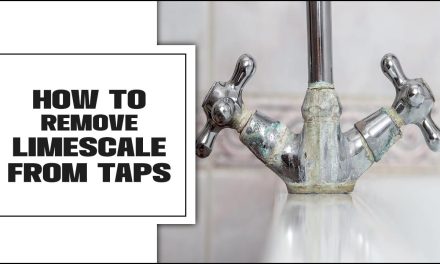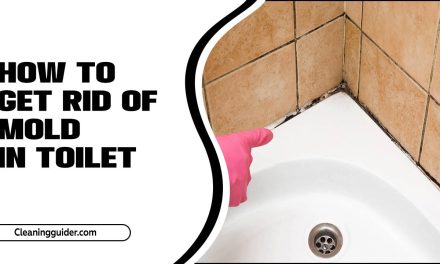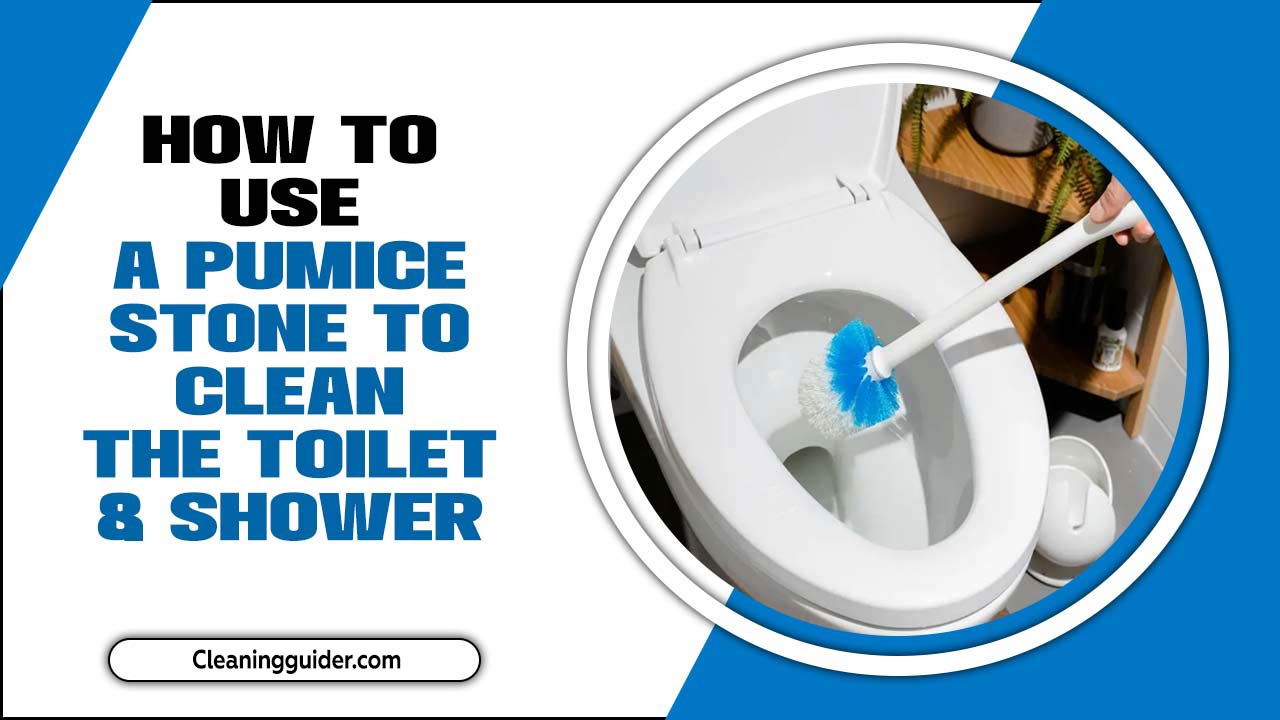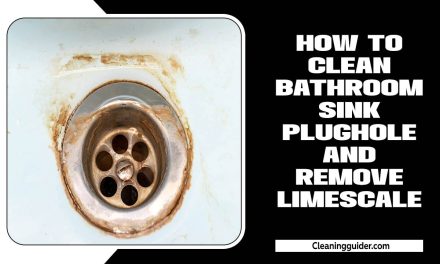Keeping a clean and hygienic bathroom is not only important for our well-being, but it also reflects our overall cleanliness and attention to detail as homeowners.
However, one common issue that almost everyone has encountered in their bathrooms is the presence of yellow stains on the toilet seat. These unsightly marks can be frustrating and embarrassing, especially when guests are over. Moreover, they can also be a breeding ground for harmful bacteria and foul odors.
But what exactly causes these yellow stains, and how can we effectively clean and prevent them? We will discuss what causes yellow stains on toilet seat & how to clean. So, let’s dive in and discover the root causes of yellow stains on toilet seats and learn how to keep our bathrooms sparkling clean.
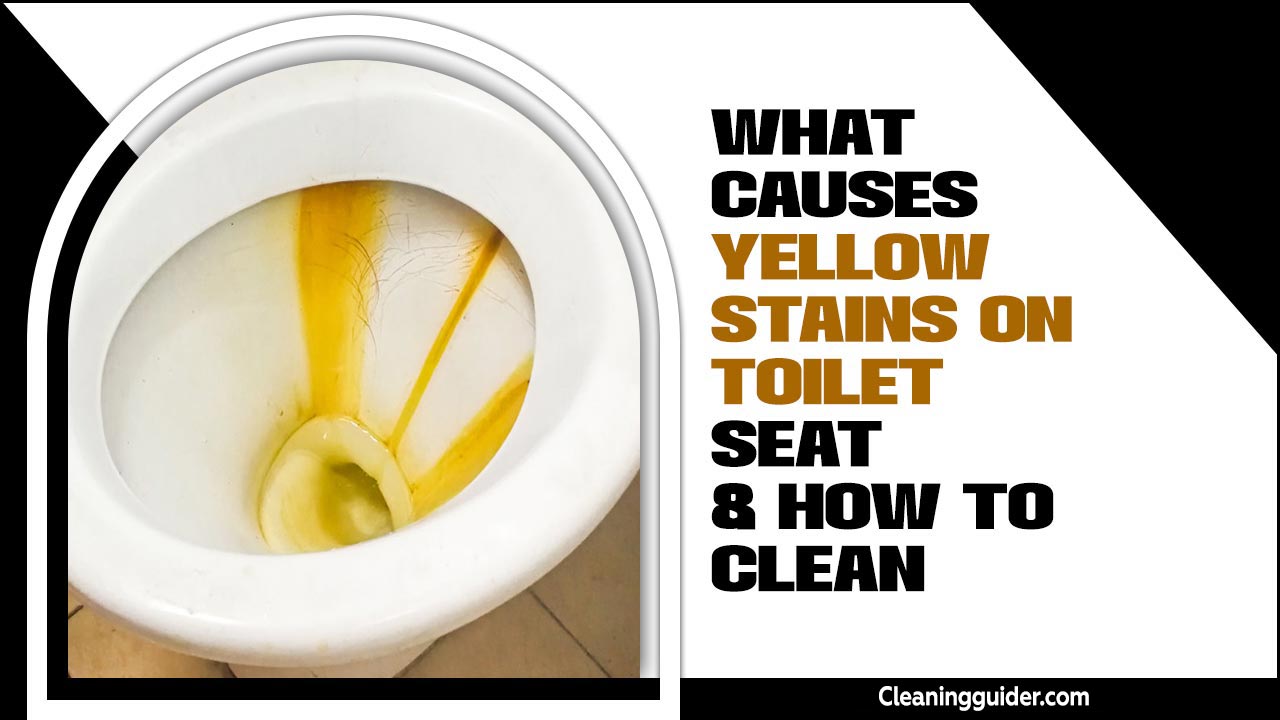
What Causes Yellow Stains On Toilet Seat & How To Clean – You Should Know
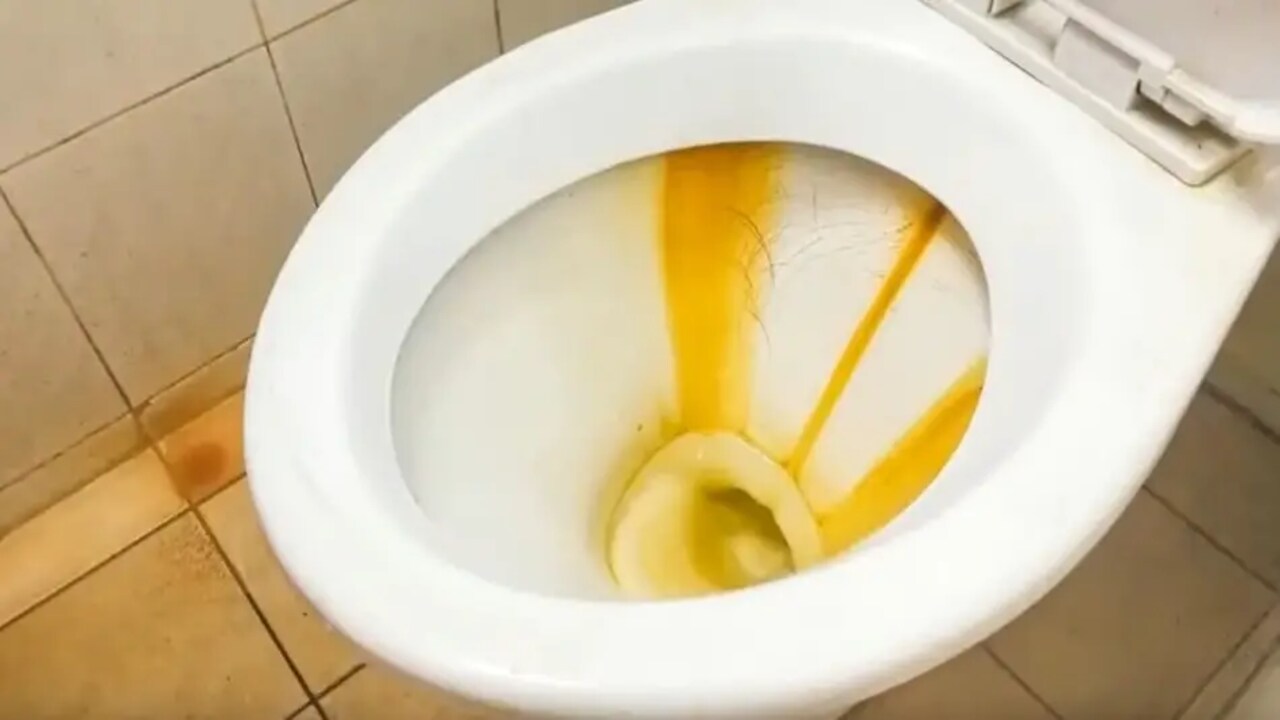
In maintaining a clean and sanitized restroom, it is crucial to understand what causes yellow stains on a toilet seat and how to clean them effectively. Yellow stains on a toilet seat can be caused by a variety of factors, including hard water minerals, urine splatter, and the buildup of bacteria and mold.
These unsightly stains not only detract from the overall appearance of the restroom but also pose potential health risks to users. Knowing the causes of yellow stains on a toilet seat is essential in implementing the appropriate cleaning methods. Hard water minerals, for instance, can leave behind mineral deposits that gradually turn yellow over time. Here, we will give you some steps on what causes yellow stains on toilet seat & how to clean.
1.Urine Staining
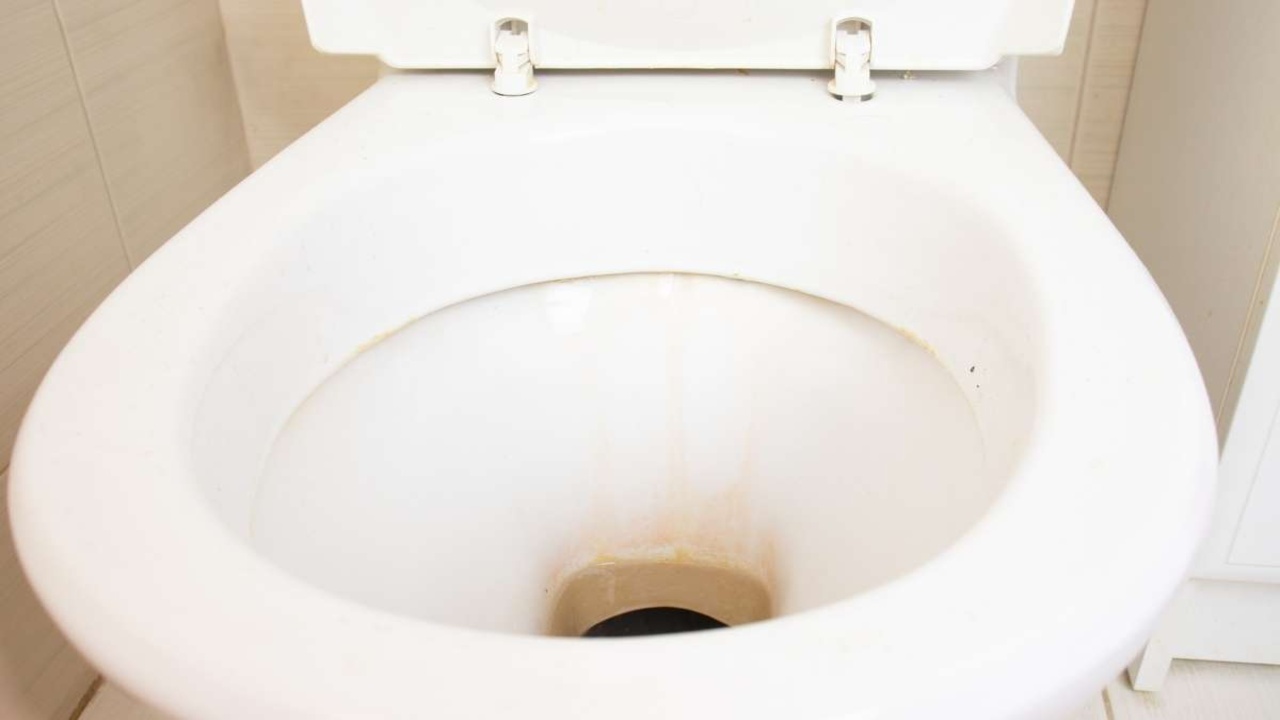
Urine staining is a common issue that causes yellow stains on toilet seats. It is essential to understand the causes of these stains in order to address and prevent them effectively. Several factors can contribute to urine staining, ranging from personal habits to the quality of the toilet seat materials. One of the primary causes of urine staining is poor personal hygiene. When individuals do not properly aim their urine into the toilet bowl, it can result in splashing and subsequent staining of the seat.
This is particularly common among children who are still learning proper bathroom etiquette. Another contributing factor is the composition of the toilet seat itself. Some materials, such as plastic or porous surfaces, are more susceptible to staining. This can be exacerbated if the seat has not been adequately cleaned and maintained.
2.Hard Water

Hard water is a common issue that many homeowners face, and one of the visible consequences of this problem is the formation of unsightly yellow stains on toilet seats. After that, Hard water contains high levels of minerals such as calcium and magnesium, which can leave residue on surfaces and fixtures.
When these minerals come into contact with the toilet seat, they can react with the chemicals in cleaning products or even the natural oils on our skin, resulting in the formation of yellow stains.
These stains not only compromise the aesthetic appeal of the toilet seat but also indicate the presence of hard water. The yellow discoloration can be particularly stubborn and difficult to remove, requiring specialized cleaning techniques. Regular household cleaners may not be effective in eliminating the stains, and harsh scrubbing may further damage the surface of the seat.
3.Cleaning Chemicals
Cleaning chemicals can be highly effective in maintaining cleanliness and hygiene in various areas of our homes and workplaces. However, it is important to be aware of the potential side effects that certain cleaning chemicals can have on specific surfaces. One common issue that many people encounter is the formation of yellow stains on toilet seats after using certain cleaning products.
The yellow stains on a toilet seat can be caused by a variety of factors, including the chemical composition of the cleaning product used. Some cleaning chemicals contain ingredients that, when in contact with certain materials, can react and cause discoloration. This can be particularly problematic in the case of toilet seats, which are often made of materials such as plastic or wood.
4.Sunlight
Sunlight, although beneficial in many ways, can sometimes have unintended consequences, such as causing yellow stains on toilet seats. This phenomenon occurs due to a chemical reaction between the ultraviolet (UV) rays present in sunlight and certain substances present in the toilet seat material or cleaning products. These substances, such as urea or ammonia, can react with UV rays, resulting in the formation of yellowish compounds.
To prevent or minimize the occurrence of these unsightly stains, it is essential to understand their underlying causes. First and foremost, selecting toilet seats made from high-quality materials that are resistant to discoloration can significantly reduce the likelihood of yellow stains. Additionally, using cleaning products specifically formulated for toilet seats that do not contain ammonia or other reactive substances can help maintain their original appearance.
7 Steps To Clean Of Yellow Stains On The Toilet Seat
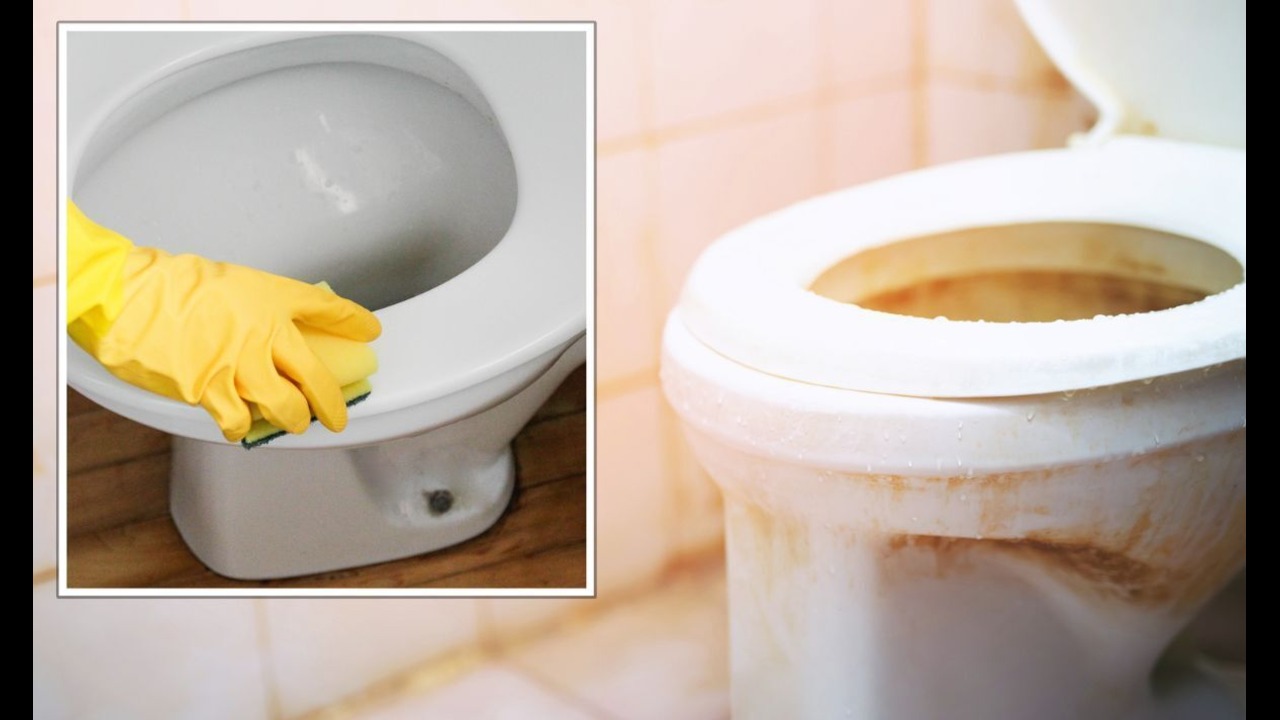
Knowing the steps to clean yellow stains on the toilet seat is crucial for maintaining a hygienic bathroom environment. These stains are not only unsightly but can also harbor harmful bacteria and germs. A clean toilet seat not only enhances the overall appearance of the bathroom but also ensures the well-being of those using it.
One reason why it is important to know the steps to clean yellow stains on the toilet seat is to prevent the spread of diseases.
Bacteria and germs thrive in moist environments, and a dirty toilet seat provides an ideal breeding ground for these microorganisms. Regular cleaning and removal of yellow stains help eliminate these pathogens, reducing the risk of infections and illnesses.
1.Spray WD-40 On The Toilet Seat
In order to effectively clean yellow stains on a toilet seat, it is recommended to utilize a trusted household product such as WD-40. WD-40, a versatile spray commonly used for lubrication and maintenance, can also prove to be highly effective in removing stubborn stains on various surfaces, including toilet seats.
- Grab a can of WD40.
- Shake the can well to mix the contents.
- Aim the nozzle towards the toilet seat.
- Spray a light coating of WD40 onto the seat surface.
- Be sure to cover the entire seat area.
- Allow the WD40 to sit on the seat for a few minutes.
- Use a clean cloth or paper towel to wipe away the excess WD40.
- Repeat the process as necessary to remove any stubborn stains or residue.
- Enjoy a clean and lubricated toilet seat.
2.Soak In Bleach
over time, yellow stains can develop on the toilet seat, leaving an unsightly appearance and an unclean impression. To effectively eliminate these stains and restore the seat’s pristine condition, a proven technique is to soak it in bleach. Bleach, a powerful disinfectant commonly found in households, is renowned for its ability to kill germs and remove stubborn stains.
Begin the process by diluting bleach with water in a well-ventilated area, following the manufacturer’s instructions for the appropriate ratio. Once the solution is prepared, carefully remove the toilet seat from its hinges, ensuring caution to prevent any damage.
Place the seat in a container or bathtub, ensuring it is fully submerged in the bleach-water mixture. Allow the toilet seat to soak for a recommended duration, typically around 30 minutes, although this may vary depending on the severity of the stains. During this time, the bleach penetrates the stubborn yellow residue, breaking it down and restoring the seat’s original color.
3.Let The Liquid Sit For Some Time

To effectively clean yellow stains on a toilet seat, it is important to follow a systematic approach. Begin by gathering the necessary materials, including a cleaning agent, a sponge or cloth, and gloves for protection. One effective method involves using a solution of white vinegar and water.
Mix equal parts of vinegar and water in a spray bottle and apply it generously onto the stained area. Allow the liquid to sit for some time, ideally around 15-20 minutes, to allow it to penetrate and break down the stains. During this time, it is crucial to ensure proper ventilation in the bathroom to minimize the strong odor of vinegar.
4.Scrub And Clean The Stains
To ensure a pristine and inviting bathroom environment, it is crucial to scrub and clean these yellow stains diligently. To begin the process, gather the necessary cleaning supplies, such as a toilet brush, cleaning solution, gloves, and a microfiber cloth.
Put on gloves to protect your hands from any potential irritants during the cleaning process. Next, apply the designated cleaning solution directly onto the stained areas of the toilet seat. Ensure that the solution is specifically formulated to tackle stubborn stains and effectively eliminate bacteria.
Using the toilet brush, gently scrub the stained areas in a circular motion, focusing on applying consistent pressure to lift off the yellow discoloration. Be thorough in your scrubbing technique to ensure optimal results. Additionally, pay attention to the hinges and the underside of the toilet seat, as these areas are often overlooked but can harbor dirt and grime.
5.Bicarbonate Of Soda And White Vinegar
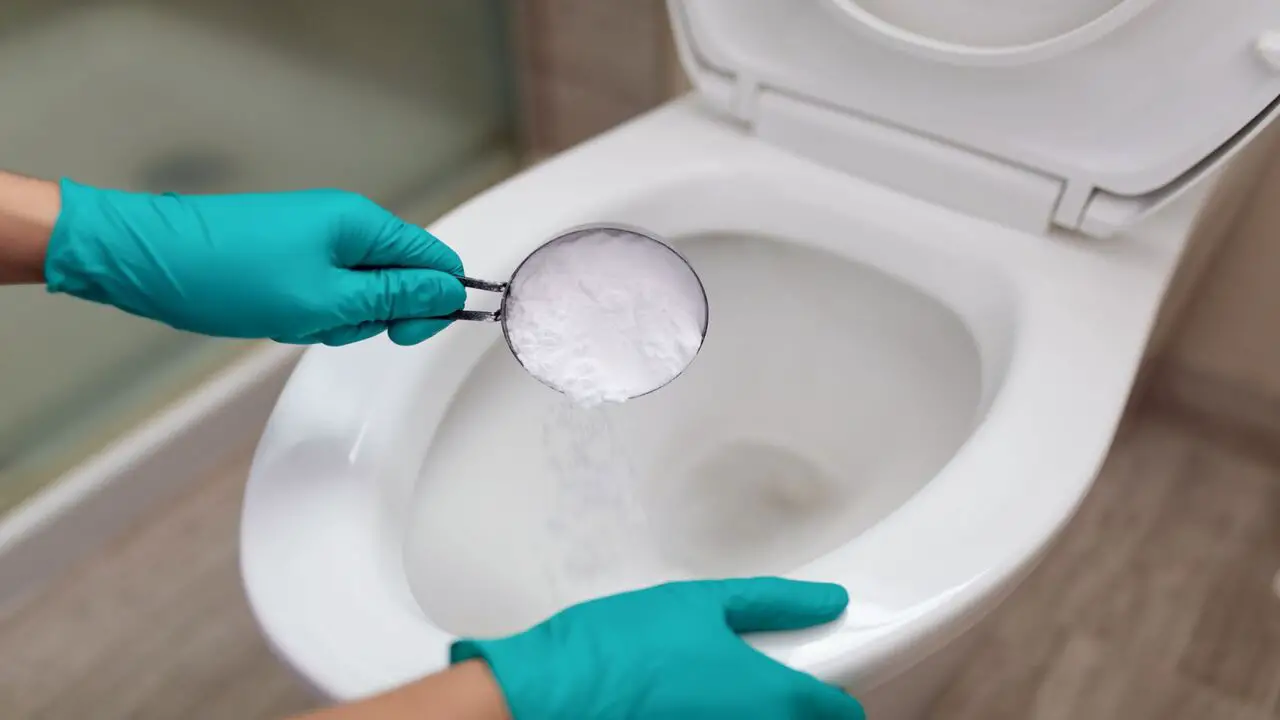
Regarding to cleaning yellow stains on a toilet seat, bicarbonate of soda and white vinegar can be a highly effective and environmentally-friendly solution. Bicarbonate of soda, also known as baking soda, is a versatile cleaning agent that is gentle yet powerful enough to tackle tough stains.
Its alkaline properties make it ideal for breaking down and neutralizing acidic stains, such as those caused by urine or hard water deposits. To create a cleaning solution with bicarbonate of soda and white vinegar, start by sprinkling a generous amount of baking soda directly onto the stained areas of the toilet seat.
Allow it to sit for a few minutes to penetrate the stain. Next, pour a small amount of white vinegar onto a clean cloth or sponge and gently scrub the stained areas. The combination of the acidic vinegar and the alkaline baking soda creates a chemical reaction that helps to dissolve and lift the yellow stains.
6.Lemon Juice
Lemon juice has long been known for its powerful cleaning properties, making it an excellent natural alternative for tackling tough stains. One common challenge many individuals face is the stubborn yellow stains that can accumulate on toilet seats over time. Fortunately, lemon juice is an effective solution to this problem.
- Squeeze fresh lemon juice into a spray bottle.
- Spray the lemon juice
- Directly onto the yellow stains on the toilet seat.
- Let the lemon juice sit
- On the stains for a few minutes.
- Use a toilet brush or
- Scrubber to scrub the stained areas gently.
- Rinse the toilet seat
- Thoroughly with water.
- Repeat the process if
- Necessary until the stains are completely removed.
- Dry the toilet seat with
- A clean cloth or towel.
7.Preventing Yellow Staining
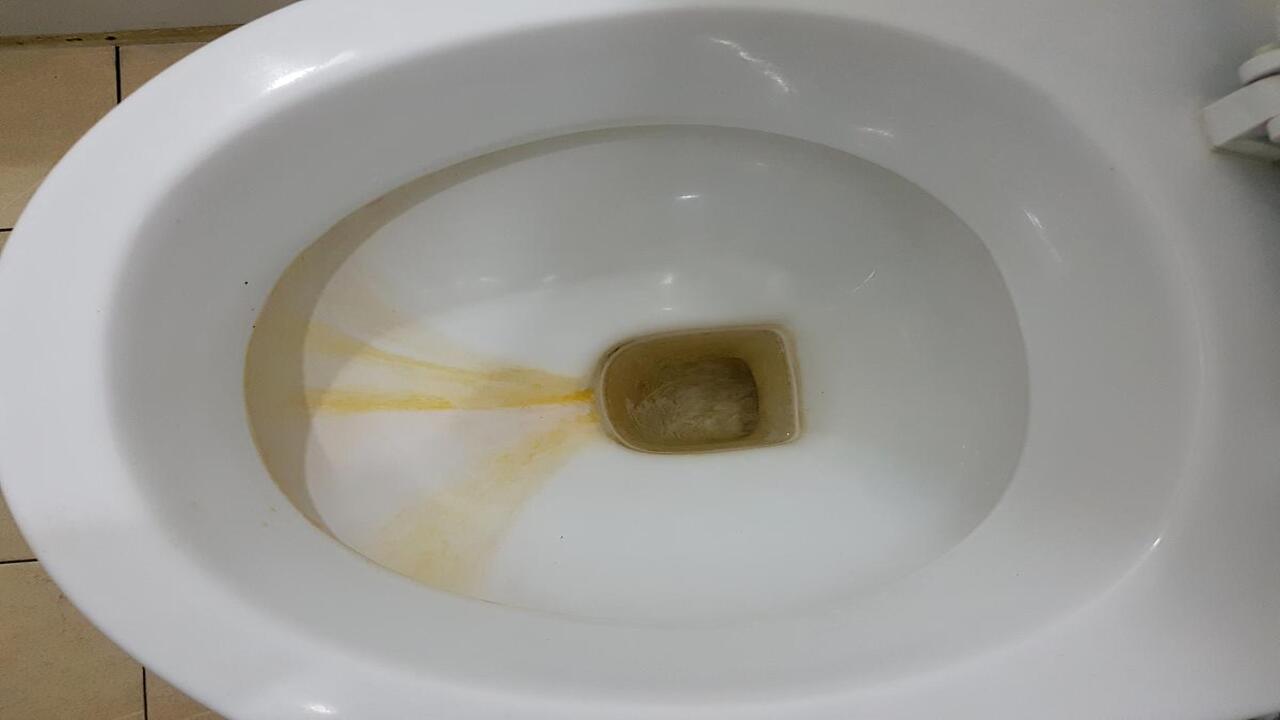
Maintaining cleanliness and hygiene in a bathroom is of utmost importance, and one aspect that often requires attention is the prevention and removal of yellow stains on the toilet seat. Yellow staining on toilet seats can be unsightly and can give the impression of poor cleanliness and neglect.
To prevent such staining, it is essential to establish a regular cleaning routine. This routine should involve using mild cleaning agents specifically designed for bathroom surfaces.
These agents should be applied directly to the toilet seat and left to sit for a few minutes before scrubbing gently with a soft-bristle brush or sponge. It is crucial to avoid using abrasive cleaners or harsh chemicals as they can damage the surface of the toilet seat.
Conclusion:
Yellow stains on toilet seats can be a common and frustrating problem. Whether caused by hard water, mineral buildup, or bacteria, these stains can be unsightly and difficult to remove. However, with the right cleaning products and techniques, they can be effectively eliminated, leaving your toilet seat looking clean and fresh.
Regular maintenance and proper cleaning habits can also prevent these stains from reappearing in the future. Remember always to use caution and follow the instructions on cleaning products to ensure safety and effectiveness.
With these tips, you can easily maintain a pristine toilet seat and a clean bathroom for you and your family. If you read the above outline properly, we hope you now understand what causes yellow stains on toilet seat & how to clean.
FAQs:
1.What Causes Yellow Stains On A Toilet Seat?
Ans: A combination of mineral deposits, urine, and bacteria often causes yellow stains on a toilet seat. Over time, these substances can build up and cause discoloration. A buildup of minerals, hard water, urine, or mold, and mildew growth can cause yellow stains on a toilet seat.
2.How Can You Clean Yellow Stains From A Toilet Seat?
Ans: To clean yellow stains from a toilet seat, you can try using a mixture of baking soda and vinegar. Apply the paste to the stains, let it sit for a few minutes, then scrub with a soft brush. Alternatively, using a mild bleach solution or a toilet bowl cleaner specifically designed for stain removal can also be effective.
3.Are There Any Natural Remedies To Remove Yellow Stains From A Toilet Seat?
Ans: Yes, you can try using baking soda and lemon juice or hydrogen peroxide mixed with water as natural alternatives to remove yellow stains from a toilet seat. Apply the mixture, let it sit for a while, scrub gently, and rinse well.
4.How Can I Prevent Yellow Stains From Forming On A Toilet Seat?
Ans: To prevent yellow stains from forming on a toilet seat, it is important to clean and maintain it regularly. Use a toilet bowl cleaner specifically designed to remove stains and prevent buildup. Scrub the seat thoroughly with a toilet brush, paying attention to any areas that may have accumulated stains.
5.Are There Any Preventive Measures To Avoid Yellow Stains On A Toilet Seat?
Ans: Yes, there are a few preventive measures you can take to avoid yellow stains on a toilet seat. Regularly cleaning the toilet seat with a mild cleaner or disinfectant can help prevent buildup. Additionally, ensuring proper ventilation in the bathroom and

